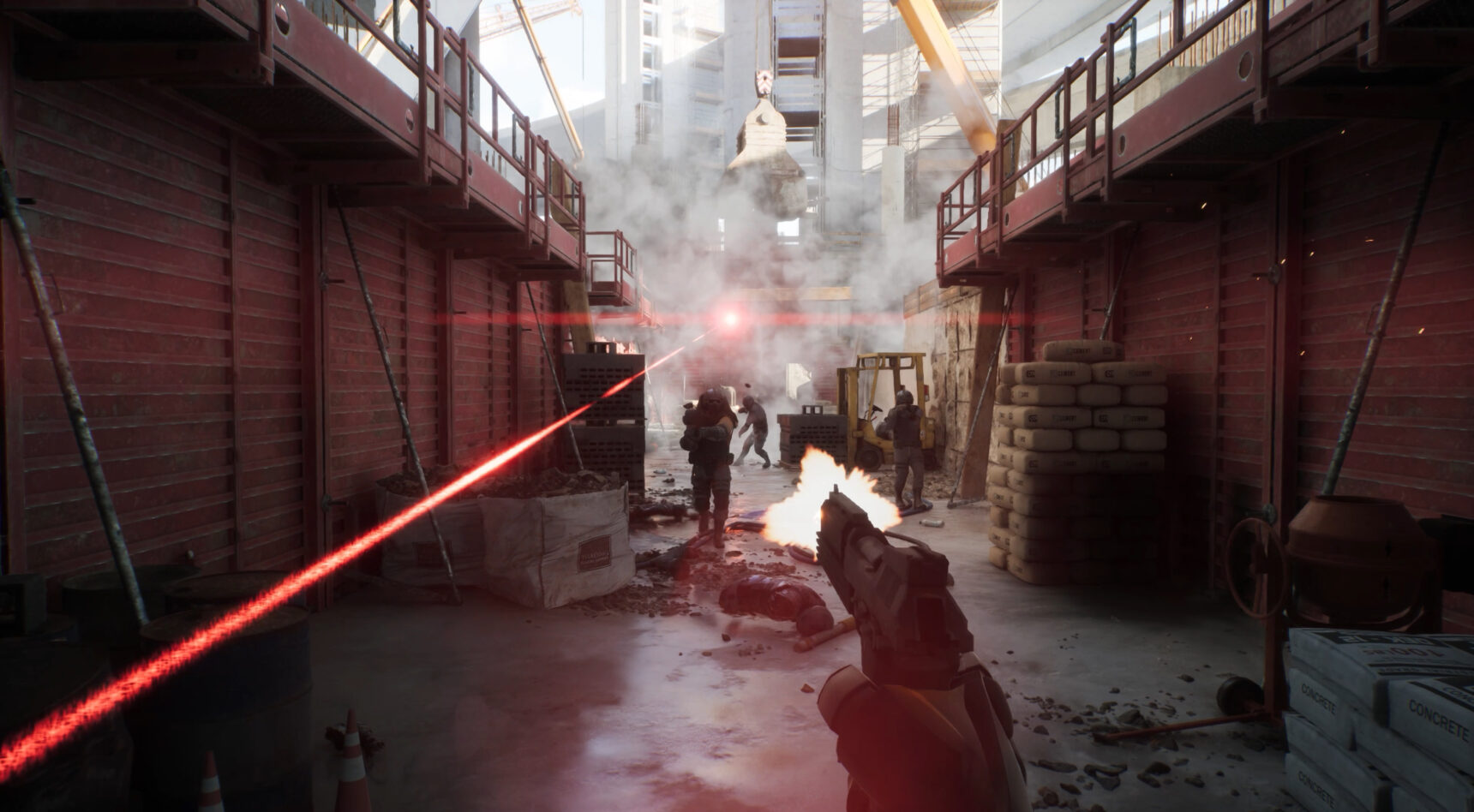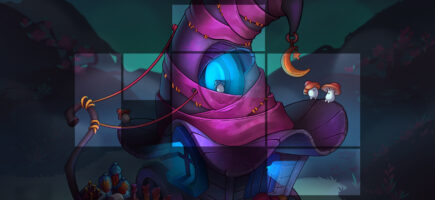The Art of Crafting a Captivating Gameplay Trailer

The most popular articles
A well-crafted gameplay trailer can be the difference between a blockbuster launch and an obscure title. It’s a player’s first glimpse into the heart and soul of your game, it reveals what makes it unique, and it’s a way to drive sales. This article will explore how to make a gameplay trailer, and what separates a captivating trailer from a forgettable one.
The Essence of Gameplay Trailer Making
The core principle of making a successful gameplay trailer is simple: show, don’t tell. Your gameplay footage is the star, so use the runtime to showcase the title’s core mechanics, unique selling points, and the sheer joy of playing. These are the commercials that highlight your game’s “fun factor”. Here are some things to keep in mind about crafting them:
- The audience. Depending on who you aim to engage, the footage may vary. This needs to be adjusted with the marketing strategy. Keeping your audience in mind applies to all stages of trailer development, as creating a perfect mixture of gameplay and storytelling, showcasing specific mechanics while leaving the best hidden behind the curtains, and even utilizing or hiding UI can significantly impact your game’s performance.
- Highlighting the Core Gameplay Loop. Depending on the game’s genre, what you show may vary, but a gameplay trailer should adequately define its fundamental cycle of actions.
- Title and Genre familiarity. Is this the first title in a series? Is this an experiment introducing a new and revolutionary mechanic? Or is it a part of a long-running franchise familiar to millions of players? Depending on where your game stands regarding its novelty, your approaches will need to be adjusted.
In an effective trailer, gameplay isn’t just “there.” Rather, it’s juxtaposed to the cinematic bits to reinforce them and serve as their continuation: the cinematic presents us with a predicament, and the gameplay “solves” it. These trailers should follow the classic framework of starting with Reason, following with Reaction, and closing with Consequences.
Our team used that approach for the Merge Dragons trailer, presenting the gameplay loop and core mechanics not in a vacuum but in a way that complements the story and evokes empathy. The gameplay footage shown in the video reinforced storytelling and fed into the narrative—presenting gameplay as a direct continuation of the cinematic and directly enabling the protagonist to defeat the big bad.
Crafting a Cohesive Narrative and Balancing It with Cinematic Elements
While the focus is on gameplay, even a short trailer benefits from a clear narrative structure. Cinematic elements like story snippets or establishing shots can add context and intrigue. Still, they should never overshadow the core gameplay, so maintain a healthy balance and remember the trailer’s goal.
The opening seconds are crucial, so start with the hook. Use a captivating scene, a powerful line of dialogue, or a glimpse of the game’s world to grab the viewer’s attention and set the stage for what’s to come. Next, weave in narrative threads. Subtly integrate story elements throughout the trailer. Show snippets of character interactions, glimpses of the game’s world, or hints at the overarching conflict. Adding this depth and intrigue in adequate proportions can make the gameplay reveal so much more effective.
Finally, leave the audience wanting more and end your trailer on a high note. The ending of your trailer should be strong, and it should also effectively combine storytelling and gameplay. Give the players a glimpse at an awesome power they may unlock (The Thu’um from Skyrim Trailer), show the protagonist arrive at the scene to serve as a problem-solver (as we did in RoboCop: Rogue City), end on a cliffhanger, or just leave the character between the hammer and a hard place—like facing a terrifying foe—and make the viewers wonder how they will get out of this situation.
Show the Right Stuff: Ensure Your Gameplay Footage is Compelling
When crafting a gameplay trailer, keep the importance of storytelling in mind—but don’t neglect the quality of gameplay footage. To ensure that what you showcase is impactful and engaging, make sure the following elements are in place:
- Variety. Don’t showcase the same repetitive actions; mix things up! Show different environments, enemy types, character abilities, and progression through the game. This keeps viewers on the edge of their seats and gives them a broader sense of the gameplay experience. Show that your gameplay and the game world influencing each other are a two-way street.
- Core Mechanics. While mixing things up is a good idea, try not to overdo it, and prioritize the fundamental gameplay loop and the unique selling points. Don’t get bogged down in intricate details or complex systems that viewers might not grasp immediately.
- The “Wow” Moments. This point branches out from the previous one. Include awe-inspiring visuals, a glimpse at an epic boss battle, unexpected twists that leave viewers wanting more, an unexpected and well-thought-through moment of using the environment to your advantage, etc. These “wow” moments create emotional connections with viewers and make the gameplay stand out.
- Player Mastery. The viewers should feel a sense of control and the impact of their actions on the world and want to jump into action after what they see. Feature skillful gameplay moments: a perfectly timed dodge, a strategic use of abilities to overcome a challenge, a creative solution to a puzzle, or a powerful combo to reinforce build versatility. Shows the viewers the potential for mastery and the satisfaction of skilled play.
The Role of Sounds and Music in Game Trailers
Simply showing gameplay isn’t enough. An excellent trailer evokes emotions—and your best friend in doing this is powerful music, impactful sound design, and strategic editing. The players must feel excited and in awe, itching to play what you just showed them. It’s all about subtly combining what they see and hear.
Use music as a storytelling tool: focus on what feeling you want to convey. Dynamic and upbeat tracks can build anticipation for action sequences. Smart usage of music serves as a way to build anticipation for a big reveal or a “wow” moment when the trailer crescendos and presents the viewer with something breathtaking. In the Project Drone Galaxy trailer, our biggest challenge was finding just the right tempo and volume that would complement the action-packed visual sequences without feeling repetitive, overlapping, or too bombastic. All SFX had to be expressive and distinct yet exist on a “perceptive” level where sound is almost “invisible,” filling the pauses and supporting the visuals.
Calm and somber scores, on the other hand, create a sense of intrigue. They lead the audience through the narrative to the moment where something important is shown, forging connections between the viewers and the hero(es) shown in the video along the way. Utilize the power of subtlety in sound design. It goes beyond explosions and thunderous sound effects. The subtle whoosh of a character’s movement in shadows, the satisfying clang of weapons connecting, or the eerie creaking of a door can all add layers of immersion. Consider the overall tone of your game and choose music that complements it.
We Got the Dos. What About the Don’ts?
Even the best intentions can lead to a lackluster trailer. In addition to the list of effective approaches that will teach you how to make gameplay trailers, there are also a few pitfalls you should avoid:
- Too Much Talk, Not Enough Action. Sometimes, there’s a temptation to lean heavily into storytelling and overlook gameplay. But don’t mix up trailer genres—there are announcing, story, and cinematic trailers with heavy emphasis on the story. When it comes to gameplay trailers, avoid excessive voice-over narration: let the gameplay footage speak for itself.
- Focus on Features, Not Fun. Listing features like “detailed character creator” or “millions of procedurally generated levels” may be tempting, but instead of this bland approach, try to show how these things actually translate into engaging gameplay experiences. Always keep the fun factor in mind!
- Overlooking the Importance of Editing. This goes without saying, but using stuttering frame rates, unpolished gameplay, or unfinished graphics will immediately turn viewers off. What you show in the trailer has to be the creme de la creme of the game, so invest the time and resources to represent it well.
- Forgetting the Call to Action. Usually, the gameplay trailer comes out when a significant portion of the game is ready. Hooking the audience isn’t enough; you need to reel them in. Ask the viewers to pre-order the game (if this option is available), wishlist it, or visit your website to learn more.
Conclusion
A well-made gameplay trailer is an investment that can pay off tenfold in the long run. Following these tips and focusing on the core principles, you can craft a captivating video that effectively “sells” the game and generates excitement among potential players months before release.




